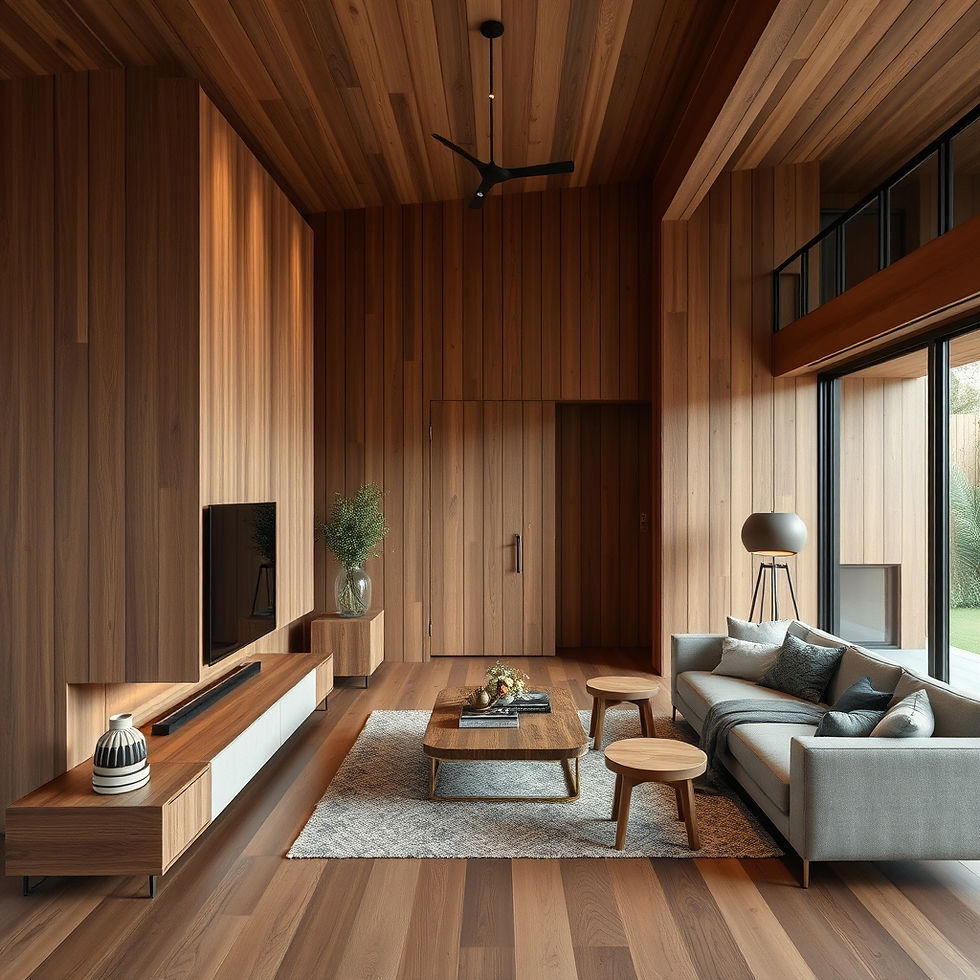Floating Stairs - What are they and how do they work?
- sales61423
- Mar 7, 2023
- 4 min read
Floating stairs are a popular and innovative design element that adds a sleek and modern touch to any home or building. These stairs are also known as cantilevered stairs, suspended stairs, or floating tread stairs.
Overview of the Concept
The concept behind floating stairs is simple yet effective. These stairs are designed to appear as if they are floating without any visible support structures. This is achieved by attaching the treads to the wall rather than the floor, which gives the illusion of weightlessness.
Floating stairs are a stylish and functional alternative to traditional stair designs and are often used in contemporary homes, commercial spaces, and public buildings. The clean lines and sleek design of these stairs add a touch of sophistication and elegance to any space.
In this blog, we'll take a closer look at floating stairs, exploring what they are, how they work, and the advantages and disadvantages of this design feature.
What are Floating Stairs?
Design and Construction
Floating stairs are designed to be visually striking and minimalistic while also being safe and functional. The treads are attached to the wall and supported by a hidden structural framework that provides stability and support.
The design and construction of floating stairs can vary, with some designs featuring a single tread that appears to float, while others feature multiple threads that are connected to each other and the wall. The treads can be made from a range of materials, including wood, concrete, glass, or metal, which allows for a wide range of design options.
Characteristics of Floating Stairs
One of the most notable characteristics of floating stairs is their sleek and modern design. They also often feature clean lines and minimal ornamentation, which creates a simple yet striking aesthetic.
Another characteristic of floating stairs is their open design, which allows for natural light to flow through the space. This makes them a popular choice for homes and buildings that are looking to create a bright and open atmosphere.
Materials Used
The materials used for floating stairs can range from traditional materials like wood and concrete to more modern materials like glass and metal. The choice of material can impact the overall look and feel of the stairs, as well as their durability and ease of maintenance.
For example, a floating staircase made from wood may provide a warm and natural feel, while a glass floating staircase may offer a more contemporary and modern feel. It's important to choose a material that complements the overall design and aesthetic of the home or building.
How do Floating Stairs Work?
Structural Design and Mechanics
The key to the functionality of floating stairs is the structural design and mechanics. The treads are attached to the wall and supported by a hidden structural framework that provides stability and support. This framework is carefully designed to ensure that the stairs are safe and secure while also appearing to float.
Suspension and Support Systems
The suspension and support systems used in floating stairs can vary, depending on the design and construction. Some common suspension and support systems include steel cables, rods, and brackets. These systems are carefully concealed within the wall or behind the treads to ensure that they are not visible and do not detract from the overall aesthetic of the stairs.
Connection Details
The connection details of floating stairs are critical to their functionality and safety. The treads must be securely attached to the wall, and the structural framework must be designed to withstand the weight of the treads and any load that may be placed upon them.
In order to ensure that the connection details are secure and stable, it's important to work with an experienced designer or contractor. They will be able to ensure that the stairs are designed and constructed to meet building codes and safety requirements while also delivering a visually stunning and functional design.
Advantages and Disadvantages of Floating Stairs
Pros and Cons
Floating stairs offer a number of advantages, including their sleek and modern design, their open and bright aesthetic, and their ease of maintenance. However, they also come with some disadvantages, including their cost, which can be higher than traditional stair designs, and the complexity of their installation, which may require the services of a professional.
Aesthetic Appeal
One of the biggest advantages of floating stairs is their aesthetic appeal. These stairs create a stunning visual effect that can transform any space, adding a touch of sophistication and style. The clean lines and minimal design of floating stairs can complement a wide range of decor styles, from contemporary to traditional.
Maintenance and Upkeep
Maintenance and upkeep is another factor to consider when choosing floating stairs. These stairs require careful cleaning and upkeep to maintain their sleek and modern look. They may also be more vulnerable to damage than traditional stair designs, so it's important to choose materials that are durable and low-maintenance.
Conclusion
In conclusion, floating stairs are a unique and visually striking addition to any home or building. With their sleek and modern design, open and bright aesthetic, and ease of maintenance, these stairs offer a range of benefits that are sure to appeal to those who are looking for a stylish and functional solution.
At Proboard, we are proud to offer a wide range of floating stairs designed to meet the needs of any home or building. Our team of experienced designers and contractors will work with you to design and install the perfect floating stairs for your space, ensuring that your stairs are both beautiful and functional.
Whether you are looking for a contemporary solution or a more traditional design, Proboard has the expertise and experience to help. Contact us today to learn more about our floating stairs and how we can help you create the perfect solution for your home or building.





Comments